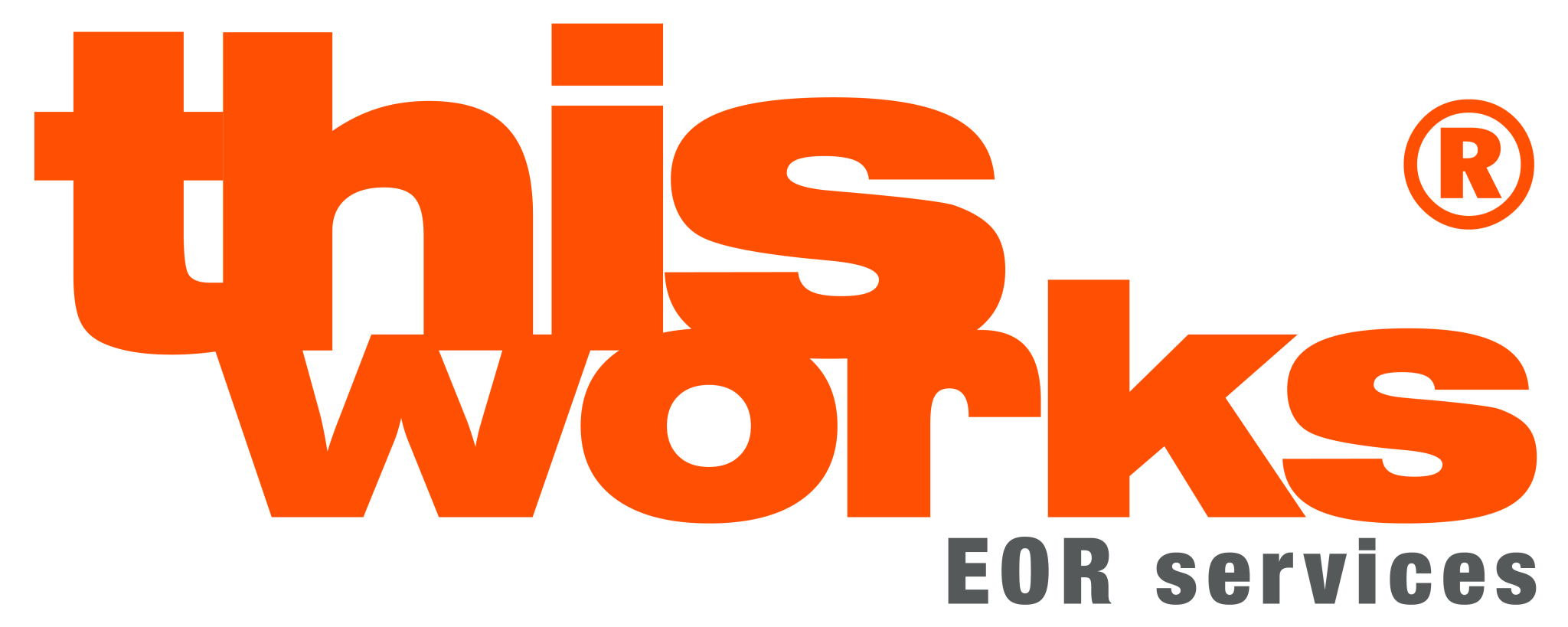
Full-time vs Part-time: differences in hours, pay, and benefits
The Bureau of Labor Statistics states that more than half of the employees in the United States work full-time, with the remaining employees working part-time. In regard to the Germany’s Federal Statistical Office, 70-75% of the employees in the EU work full-time. Approximately 20-25% works part-time. However, there are major differences between countries.
The Netherlands for example has the highest rate of part-time workers, with over 40%, particularly women. In addition, Belgium, Germany, and Austria also have a higher part-time rate which is above the EU average.
These two types of employment have different characteristics regarding many factors defining employee status, such as working hours, wages, entitlements, and stability.
Usually, full-time employment means having a job for 35 to 40 hours per week with more excellent stability and higher wages and full-time employee benefits, including health insurance and retirement programs. On the other hand, part-time work is a job that is less than 30 hours a week, and even though it is flexible, the coverage is less in terms of allowance, insurance, and surety.
Knowledge of these differences is essential because it provides the employee with all the necessary information to decide which option fits best into their career progression, personal life, and financial situation. This blog will dive into the details, comparing full-time employee benefits vs part-time hours, wages, and overall work-life balance. In this article, we discuss the strengths and weaknesses of both options to guide the reader in making the right decision.
Defining full-time vs part-time hours
In most industries today, if a person is a full-time employee, they should work 35 to 40 hours a week. These standards typically guarantee a steady income, an option to receive benefits and higher job security. However, full-time work differs depending on whether the employer or industry provides employment opportunities. For instance, some companies define full-time work as 30 hours a week to qualify for benefits.
In contrast, part-time employment is used when the individual spends less than 30 hours serving their employer. As much as they are favorable due to flexibility, most part-time jobs pay lower salary, minimum or no benefits and less job security than full-time jobs.
This also means that the full-time vs part-time hours may differ from country to industry and industry to industry. For instance, in the European Union, the working week may be at most 48 hours in full-time jobs, while in the United States of America, overtime starts after 40 hours of work. Knowing and differentiating between the FTW (full-time work) and PTW (part-time work) is essential, especially when analyzing potential positions.

Difference in wages full-time and part-time
The difference in wages full-time and part-time is another factor; full-time attracts more wage scales than part-time. Employees who work in a company are expected to complete a full working day and are paid a full wage or salary, while those working for a limited working day are paid per working hour. This implies that wages paid to part-time working individuals vary with the working schedule of part-time workers, which is usually one week out of the year and, therefore, has comparatively lower earning certainty than full-time workers receive.
Based on data from the U.S Bureau of Labor Statistics, full-time employees will have opportunities that are 60% higher on average than those for part-time employees. This type of employment also has an additional option to earn a higher wage in the form of premiums, increased wages for working overtime, and sales incentives that could substantially increase the number of earnings. According to Eurostat data, 17% of all employed individuals worked part-time across the EU, mostly women.
Even full-time employee benefits can also affect bonuses. It states that full-time workers are sometimes paid for extra work beyond 40 hours a week, but part-time workers may not be, even though they work additional hours. For instance, employees in the retail or hospitality sector work shorter hours, but the part-time staff is prone to open shifts during the peak time in those sectors. Still, they are not legally entitled to any minimum extra pay for their overtime hours if not for the exact terms agreed earlier.
Ultimately, the disparity between full-time and part-time employment is substantial, while both allow full-timers to be guaranteed a stable income and other monetary incentives. When deciding what is better: Whether the employees are employed on a full-time or part-time basis, the employee should consider the type and amount of income required, the benefits when available and the long-term goals for the position.
Benefits: What full-time employees receive vs part-time employees
The visible contrast between full-time and part-time employment is the opportunity to receive full-time employee benefits. Employees with full-time tenures receive benefits ranging from medical, insurance, and retirement, among others, to pro-rated time off (PTO) and sick leaves. These elements are helpful in overall remunerational provisions and can yield relatively large financial safeties and mere wages.

Health Insurance
In most organizations, these employees receive full company benefits, including company-provided health insurance for their medical, dental, and vision needs. While full-time employees enjoy these perks, those working part-time can sometimes be provided the same. The ACA (Affordable Care Act) mandates that employers only offer health benefits to employees who work at least 30 hours a week. This means many employees serving part-time with their companies need to be covered. However, some companies offer half-bare health insurance for part-time employees.
Retirement plans
Employed workers are usually given a 401(k) or pension associated with employer funding or matching. These plans provide for the future income for the worker while the employer can always add a lot of money to the worker’s savings. Many employers do not grant these retirement benefits to part-time employees, and those provide only certain defined benefits to part-time employees after specific years of service.
Paid time off (PTO) and sick leave
A company’s standard package for full-time workers includes paid vacations, sick days, and holidays. This feature of PTO is a huge bonus, especially giving time off without compromising an individual’s pay. This is quite true for part-time employees because often they are not provided with such paid benefits. Sometimes, you may receive part of your vacation days or absences due to sickness in proportion to your working hours, though it is rare.
While full-time employee benefits are more extensive, some part-time positions offer perks like flexible hours, discounted company products, or access to training and development programs. These perks make working part-time even more appealing to those who want a job that will not interfere with their other commitments. At the same time, the absence of concentrated employment makes part-time jobs less guaranteed in terms of compensation for existing benefits, including medical and pension.
Flexibility and work-life balance: full-time vs part-time
Part-time jobs for flexibility are a great option. Many part-time employees can agree with their employers about their schedules or to work less than others, meaning they can set decent balance between work and family. Flexible learning is preferred by students, parents, or anyone who has other responsibilities aside from working.
While addressing work-life balance, employees working full time will find it more difficult than their part-time counterparts because they spend so much time at work, and their roles are likely to be much more demanding. Permanent positions can lead to an occupation that demands a lot of time and thus less time for the personal or family business. According to the American Psychological Association APA, fifty percent of all full-time employees experience stress from work and family conflict.
However, within the framework of a fuller workload means more significant earnings and protection from the notion of ‘lack of regular work,’ even if it is genuinely at the cost of making time for oneself. The growing demand for part-time jobs for flexibility reflects many workers’ desire to prioritize personal well-being while maintaining a source of income.
Job security: full-time vs part-time
Regular employees typically receive more job security because they have reported for an extended period, and they are bound by contracts and protected by labor laws covering such deliveries as severance wages and unemployment insurance. Full-time positions also offer better visibility for career growth, so organizations are expected to provide that. Conversely, part-time work benefits are less secure since numerous jobs are casual or contractual. Employees of such status need more job stability and can easily find themselves dismissed or having their working hours cut. They also generally lack the same full-time employee rights as permanent workers, hence their vulnerability. However, there could be a flip from a contractual position of a part-time employee to a permanent position depending on their value and intentions in case of available chances in the company.
Tax implications: full-time vs part-time work
The circumstances vary in terms of full-time versus part-time due to the distinction in the income levels. Employees who work full-time are paid better and are likely to fall in the higher brackets regarding income taxes and social security.
For instance, part-time employees who earn relatively less should be ensured to pay fewer taxes as most are in lower tax bands. However, they may also have fewer deductions for benefits such as that for retirement savings. For both statuses, taxes depend on the overall income achieved during the year, including bonuses and overtime salary. People working part-time and doing other jobs must consider combining incomes to affect taxes.
There is a need to understand the differences in tax responsibilities accompanying these positions when managing money.
Full-time vs. Part-time in Different Countries: Germany, Spain, Netherlands, and the US
Different countries have unique approaches to full-time and part-time employment:
- Germany: Full-time work is 35–40 hours/week. Part-time workers (20+ hours) receive benefits like health insurance and paid leave.
- Spain: Full-time is 40 hours/week, with strict overtime rules. Part-time workers get proportional benefits but often face job insecurity.
- Netherlands: Known for flexible part-time work (below 36 hours). Part-time employees enjoy the same benefits as full-timers.
- United States: Full-time is typically 35–40 hours/week. Part-time employees (under 30 hours) may not receive benefits, which vary by employer.
Conclusion
In conclusion, full-time jobs are associated with more stable and higher earnings, wider opportunities to get benefits, and better protection against dismissal. Still, part-time work benefits combine a job with other essential activities. They work 35-40 hours per week, receive fixed wages, and enjoy prescribed medical care, pension and sick leaves, and other privileges. Meanwhile, flexible workers usually work 29 hours or less per week, are paid hourly and have limited employee benefits but can have a much more relaxed schedule.
In conclusion, the choice of full-time vs part-time employment is relative to the career aspiration, personal requirements, and financial expectations. Full-time employment suits clients looking for career growth and job security. At the same time, part-time positions are considered perfect for clients who need freedom in their schedule or an additional job. Consider your interests and close your eyes to decide which option best suits your needs.
FAQs
- What is the main difference between full-time and part-time work?
Full-time work involves 35-40 hours per week, while part-time jobs generally require fewer than 30 hours.
- How many hours define full-time vs part-time employment?
Part-time is often defined as any less than 35-40 hours per week, and the exact cut-off can be firm or country-dependent. For this analysis, employed workers were defined as those whose jobs were reduced to less than 30 hours a week.
- What are the pros and cons of working full-time?
On the other hand, full-time employees have a stable source of income, and they can access additional benefits such as health insurance and retirement plans, as well as better protection against job dismissal. However, the disadvantages are far fewer flexibility options and more working hours, which can result in employee burnout. While workers may work part-time, they might sometimes miss out on the perks and the stability of a full-time employee. Find here top 12 advantages of full-time employment from indeed.
- Are part-time workers eligible for health benefits?
Yes, but this is determined by the employer’s policy or regulation and local laws. Moreover, contract employment is often considered payment, and they cannot receive health insurance, retirement pension, or the rest. However, some employers provide some benefits for reduced-hours workers, especially those whose working hours are almost equal to those of a full-time employee.
- How do wages differ between full-time and part-time roles?
There is a common worldwide practice to pay full-time employees a fixed amount of money monthly or annually so they have a stable income. In contrast, part-time employees, as a rule, are paid by the hour, and their wages constantly change depending on the amount or number of hours worked. Sometimes, full-time positions in the organization contain extra incentives and extra hours for pay, whereas part-time positions may not.
- Can part-time workers transition to full-time roles?
Indeed, it is true that many part-time employees get a chance to move full-time if this shows interest and adds value to the employer. Whether full-time positions are available may vary according to companies since some companies opt to promote their employees to a higher post whenever an opportunity arises.
- Do full-time and part-time jobs offer different job security?
Yes, full-time jobs provide better job security since they are more likely to be signed on contracts legally. Employees may also report more job insecurity if they work part-time because their jobs might be seasonal or temporary.
- What are the tax implications for full-time vs part-time employees?
Full-time employees usually fall into higher tax brackets due to their higher income, resulting in more income taxes and social security contributions. Part-time employees, on the other hand, often fall into lower tax brackets, which can reduce their overall tax burden. If you have questions regarding the tax rates, feel free to contact our EOR experts here.
- Is it possible to maintain a work-life balance with a full-time job?
Holding a full-time job means more extended hours and increased responsibilities; however, having a healthy work-life balance is achievable. It goes down to the fact that most part-time jobs offer more flexibility since one can combine them with other duties. Check out our latest blogs Remote Well-being: How To Take Care Of Remote Employees’ Mental Health
Article Author – Gino Peters
Gino Peters is the Commercial Director at ThisWorks, with a rich history of nearly a decade in international payroll. Throughout his tenure, he has consistently kept abreast of evolving labor legislation, ensuring that ThisWorks remains at the forefront of industry knowledge. Beyond his vast expertise, Gino is deeply committed to advising and guiding clients and partners with precise insights. His leadership guarantees that all content and operations at ThisWorks meet the highest standards of clarity, accuracy, and compliance.
Follow him on Linkedin
Book a free consultation with Gino Peters






